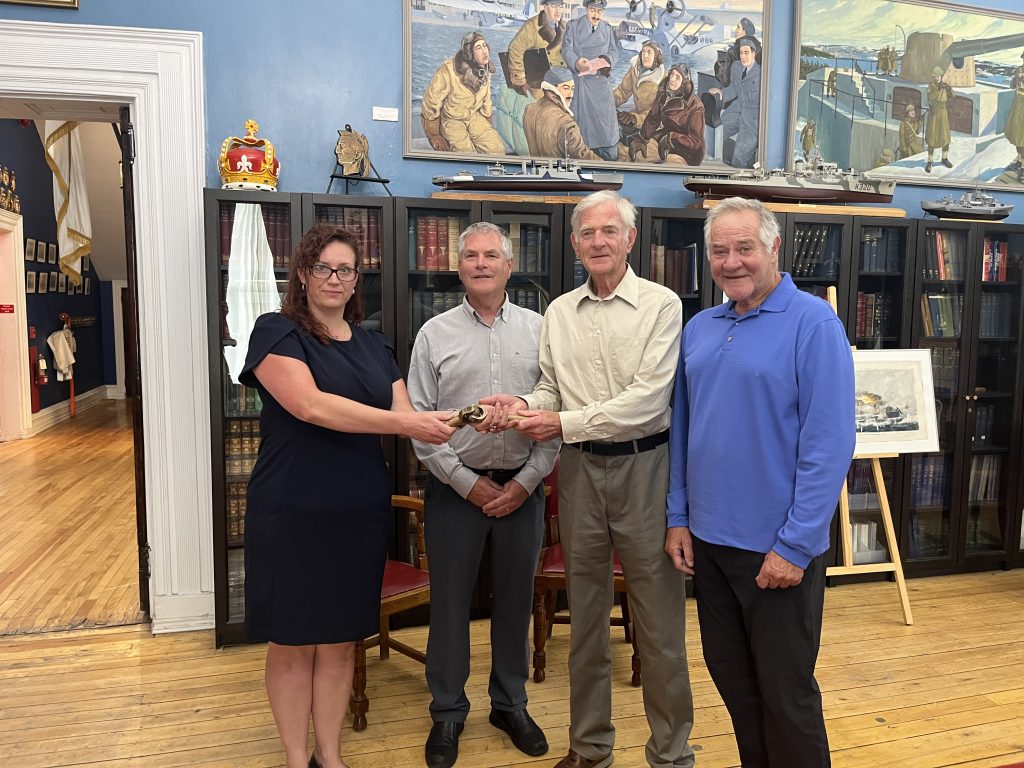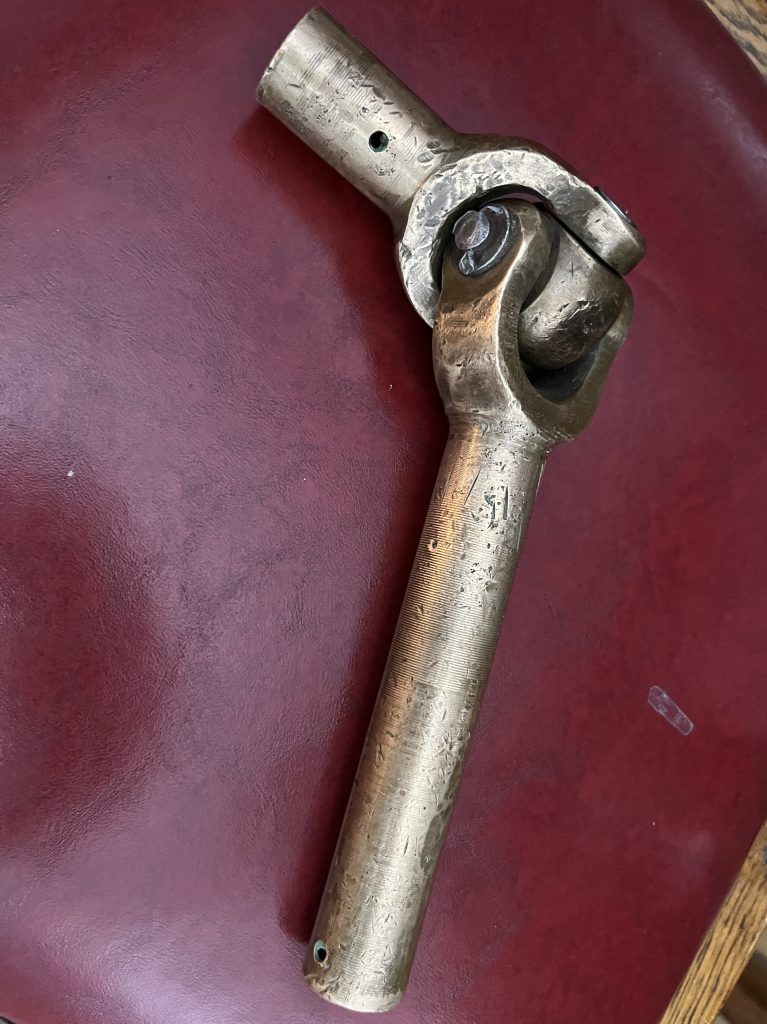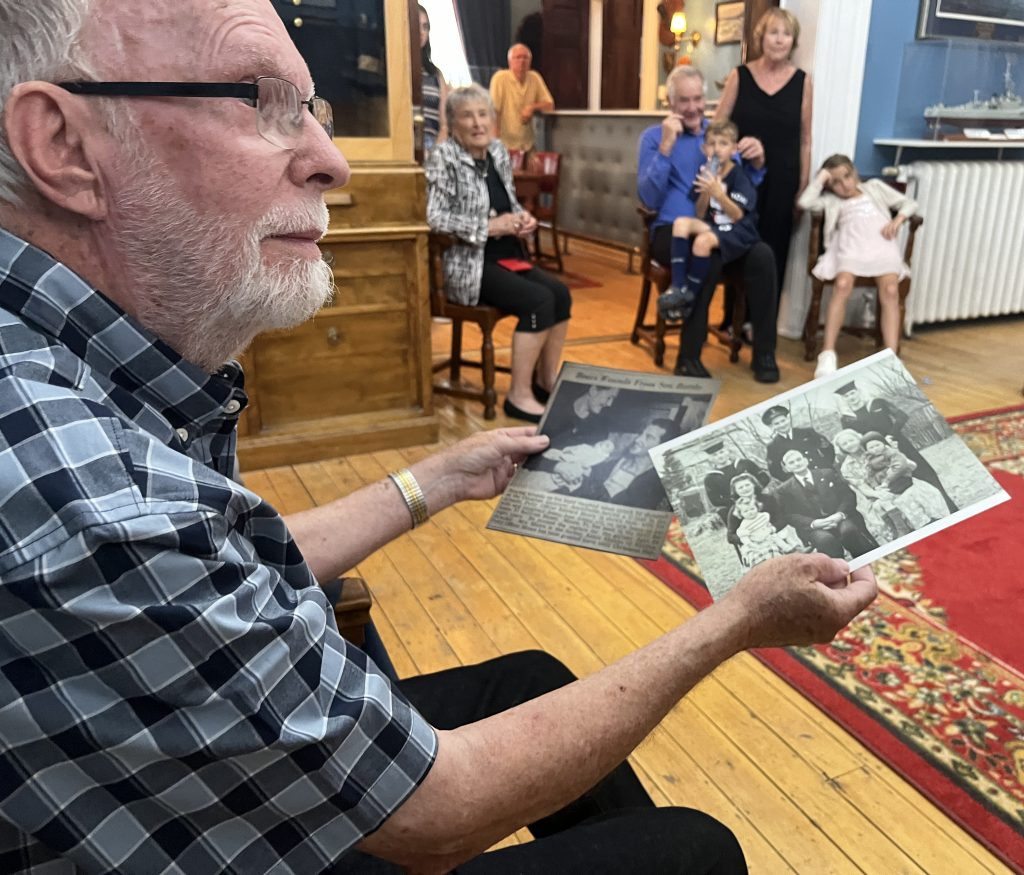
HMCS Assiniboine artefact donated to Naval Museum on battle anniversary
By Nathan Stone,
Trident Staff

A surviving piece from a Second World War-era Royal Canadian Navy (RCN) vessel has found a new home at the Naval Museum of Halifax, coinciding with a historic anniversary.
On August 6, a group, including descendants of a sailor who served on Her Majesty’s Canadian Ship (HMCS) Assiniboine I18, donated a brass joint, originally mounted in the ship’s engine room, to the Naval Museum. The private ceremony marked the first time an artifact from HMCS Assiniboine has been added to the museum’s collection.
The date of the ceremony was chosen to commemorate the 82nd anniversary of HMCS Assiniboine’s most famous action: ramming and sinking the German submarine U-210 while escorting a convoy during the Battle of the Atlantic.
Known as a “universal joint,” the brass piece was mass-produced and designed to fit a variety of parts, making it a common component on naval ships. Their abundance ensured that repairs or replacements could be made quickly and efficiently.
The artefact changed hands multiple times until it was officially donated by the Moore family, represented at the ceremony by brothers Richard and Peter Moore. Their father, Petty Officer Edward Moore, served as a stoker in the engine room aboard Assiniboine during the Second World War.
The Moore’s were provided the artefact by local artist Tom Forrestal, who painted a mural of HMCS Assiniboine that hangs in the Wardroom at Stadacona. The mural depicts the battle between Assiniboine and U-210, moments before the two ships collided. Forrestal was gifted the brass joint four years ago by Rupert Stewart, whose father, a welder, salvaged parts from the ship after it wrecked near East Point, Prince Edward Island in 1945.
Rupert described being brought aboard the ship by his father as a child.
“I remember climbing up the ladder, getting up on the deck and being up on the bridge,” he said.
“I could smell the oil… There was water coming in with every wave that hit. I could see the water coming through the portholes and going down into the bilge. I remember it like it was yesterday.”
Rupert’s father salvaged many items from Assiniboine, some of which are still in his possession. The brass joint was in a box in the garage for decades, until Rupert retrieved it, cleaned and restored it for Forrestal. It was a gift in return for Forrestal providing Rupert with a print of his Assiniboine mural to display with his porthole window, another artefact from the ship.
Forrestal had the idea to donate the brass joint to the museum, but being aware of the Moore’s family connection with Assiniboine, he felt they should be the ones to make the donation. Colonel (Ret’d) Lee Myrhaugen, an associate of both Forrestal and the Moore family, helped make the connections.
Speaking at the ceremony, Myrhaugen remarked on Assiniboine’s history and the “significant” anniversary of the ship’s victory over U-210, and noted that Petty Officer Edward Moore served during that battle.
Assiniboine was received by the RCN in 1939 – the ship was originally built for the Royal Navy and was commissioned in 1932 as HMS Kempenfelt. The ship served on convoy escort duty during the Battle of the Atlantic. On August 6, 1942, Assiniboine spotted the German submarine U-210 while serving as the rearguard for a convoy. Assiniboine gave chase and sustained damage from the U-boat’s guns before ramming and sinking the submarine.
The ship would continue to serve through the rest of the war, including on anti-submarine patrols during the invasion of Normandy, and with a brief stint as a troop transport.
On November 10, 1945, while travelling to Baltimore for disassembly, Assiniboine broke its tow during a storm and became wrecked on the shore near East Point.
Rupert, who still lives in the area, said that the story of Assiniboine was important to him and his family.
“It’s been a big part of our family for years; we watched the thing disintegrate from the time it was intact until there was absolutely nothing left.”
He added that he was happy to see the brass joint preserved at the museum as a piece of naval history.
“It’s been a long journey, but it ended up in the right place.”







